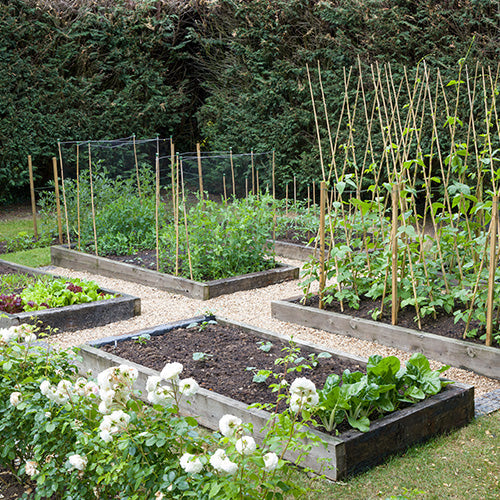What To Do first
Sending plants by post may cause them a little stress, so unpack them immediately and, if dry, stand them for a few minutes in about 2.5cm (1in) of water, until the compost is fully moist again. You may notice a slight yellowing of the foliage but this is quite natural after they have been in a dark box and is nothing to be worried about, they will soon recover.
Brassica plants are fully hardy and should be planted out as soon as possible after receipt. If the ground is not workable or, for some other reason, you have to delay planting for a few days, stand them upright in trays of moist compost and place them in a sheltered spot outdoors where they are in good light but out of direct sun. Take care to ensure they don’t dry out.
Planting Out
To avoid any build-up of pests or diseases, these plants should not be planted immediately after other brassicas. They will succeed best where the soil is firm and not too acid. It should also be fertile, though not recently manured.
Ideally, use ground that was manured for a previous crop and then dug and, if necessary, limed in the autumn or early winter. If it was not manured for a previous crop then some compost or well-rotted manure (such as Orgro) should have been incorporated when it was dug. Remove any weeds or surface debris and rake in some general purpose fertiliser, such as growmore, but avoid forking it over immediately before planting.
Use a garden line to ensure rows are straight. Make holes, with a trowel or dibber, at the correct spacings (see chart overleaf) and, after inserting the plants, firm them in well.
After planting give them a thorough watering to ‘puddle’ them in. Do this carefully to make sure the roots are not disturbed. If the soil is very dry it is a good idea to fill planting holes with water and allow this to drain before putting in the plants.
As your plants have not been treated with any chemicals before despatch, in areas where cabbage root fly is prevalent it is advisable to at first protect them in some way such as by covering with UV30 Fleece or enviromesh or by placing ‘collars’ around the bases of the stems. Suitable collars can be purchased or cut from materials such as roofing felt or carpet underlay.
Plant Spacing For Brassicas
|
Variety |
Spacing between plants |
Spacing between rows |
|
Broccoli (Calabrese) |
45cm (18in) |
45cm (18in) |
|
Brussels Sprouts |
60cm (24in) |
60cm (24in) |
|
Cabbage |
37cm (15in) |
37cm (15in) |
|
Cauliflower |
45cm (18in) |
45cm (18in) |
|
Kalettes® |
60cm (24in) |
60cm (24in) |
|
Kale |
45cm (18in) |
45cm (18in) |
Aftercare
Hoe regularly to control weeds. Where bird damage is a problem, and you are not protecting plants with enviromesh or fleece, cover them with some bird-proof netting, at least until they are established.
Keep well watered in dry spells, particularly in the first month after planting. An occasional liquid feed during the summer will boost the crop. Brussels sprouts may need staking in exposed positions.
Keep watch for caterpillars. If you put on a covering of UV30 Fleece or enviromesh to deter cabbage root fly this will also keep off these pests. Otherwise keep a watch for them and pick them off or spray when necessary.










